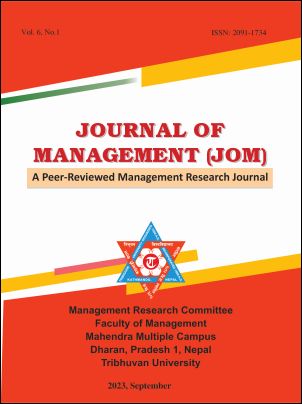Impact of Service Quality on Customer Satisfaction among Nepalese Cellular Mobile Service Providers
DOI:
https://doi.org/10.3126/jom.v6i1.58883Keywords:
SERVQUAL model, convenience, complaint handling, network quality, customer satisfaction, mobile service providersAbstract
The objective of this study was to find out how satisfied customers are with Nepal Telecom and Ncell's mobile phone services. Both the analytical and the descriptive research designs were used in this study. All users of Nepal Telecom and Ncell mobile telephone services make up the study's population and 400 mobile telephone services user was considered as a sample of the study. In this study, correlation analysis was used to find the relationship between service quality factors and customer satisfaction and linear regression analysis was used to evaluate multiple independent variables that affect the dependent variables. The findings of this study depict that moderately positive correlation between tangibles, assurance, reliability, responsiveness, empathy, convenience, complaint handling, network quality, and customer satisfaction with mobile service providers. Similarly, the correlation is significant for tangibles, assurance, reliability, responsiveness, empathy, convenience, complaint handling, and network quality with customer satisfaction. This study also shows there was an insignificant impact of tangibles, reliability, responsiveness, convenience, complaint handling, and network quality of service quality on consumer satisfaction but an insignificant impact of assurance and empathy of service quality on consumer satisfaction among Nepalese cellular mobile service providers.
Downloads
Downloads
Published
How to Cite
Issue
Section
License
© Management, Research Department, Faculty of Management, Mahendra Multiple Campus, Dharan, Nepal

